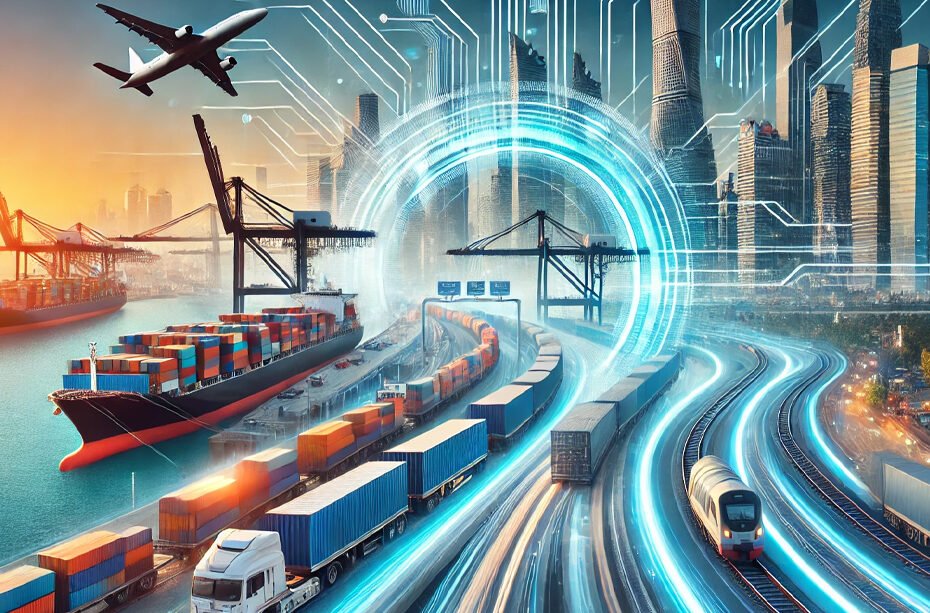Indian Logistics Industry Growth: A Key Driver for Economic Development
The movement of goods and services in India is already dynamic because of the development of sectors like e-commerce, infrastructure and the surge in digitalization. The economy’s logistics industry serves as a key engine for the growth and further allows for smooth circulation in the target economy. The Make in India initiative, GST implementation and the National Logistics Policy serve the purpose by facilitating operations within the supply chain.
Current State of the Indian Logistics Industry
The Indian logistics market is expected to have grown to $380 billion at a compound annual growth rate (CAGR) of 10–12%. The Indian economy is investing in the supply chain and central warehouse in addition to the transportation and IT sectors, which will strengthen India’s standing as a major global logistics supplier.
Interesting India Fact: In the World Bank’s Logistics Performance Index 2023, India ranked 38 and is set to improve its trading and transportation industry.
Key Factors Driving Growth in the Logistics Industry
1. Expansion of E-commerce
With online shopping on the rise, logistics companies are enhancing real time tracking, automating warehouses, and surpassing consumer expectations with advanced last mile delivery strategies. Showcasing everything that needs to be shown While the other Top 10 Logistics Companies In India are focused on faster and more accurate technology based delivery, we at Connecting India Seamlessly streamline all processes.
2. Infrastructure Development
The government’s funding for highways, rail networks, and dedicated freight corridors minimizes transportation costs, as well as time and is working with major projects like bharatmala and sagarmala to increase logistics efficiency.
3. Digitalization & Automation
Technology, from AI-driven supply chains, to blockchain based tracking systems are significantly improving logistics processes. Companies are enhancing efficiency by embedding IoT sensors, predictive analytics, and even cloud computing.
4. Growth of Third-Party Logistics (3PL) and Warehousing
The increasing need of businesses over the years has increased the customization offered by the 3PL service providers to improve the management aspect of the supply chain. This has also increased the demand for modern warehouses with automated storage and retrieval systems (ASRS).
5. Green Logistics & Sustainability
Electric delivery vehicles, carbon-neutral warehouses, and other fuel-efficient modes of transportation are example of eco-friendly logistics practices aimed at reducing the carbon footprint of delivery activities.
Challenges in the Indian Logistics Industry
The rapid growth of this sector is challenging due to the following reasons:
- High logistics costs- The logistics outlay in India is at 14 percent of the GDP, higher than the global average of 8 to 10 percent.
- Regulatory complexities- Different regulations in each state hinder smooth movement.
- Infrastructure bottlenecks- There is an improvement, but problems like traffic jams and obsolete rail systems continue to create inefficiency.
Future Outlook: What Lies Ahead?
Truly remarkable changes are anticipated to occur in the industry with these changes:
- AI-driven analytics to predict rising demand.
- Hyperlocal delivery features for immediate requests.
- Drones for delivery services will change the scope of last mile logistics.
- More infrastructure investment through Public Private Partnerships (PPPs).
Through ongoing advancements in technology, policies, and operations, India’s logistics sector is on track to be one of the most efficient and economical sectors in the world.
Conclusion
As one of the top ten logistics companies in India, Connecting India Seamlessly noted that the immeasurable growth of the logistics sector in India is paramount to the economic development and trade growth of the country. Connecting India Seamlessly and other logistics companies in India is continuing to innovate and adapt, thus ensuring that the future of Indian logistics looks bright. Ths industry is leading the future of international business with the advancement of intelligent warehousing, AI supply chains, and eco-friendly transport services.
